Tibet
Situated in the south-western part of China, the Autonomous Region of Tibet is one of the largest provinces in China covering over 460,000 square miles, however due to the harsh climatic conditions it is also the least populated province of the PRC. Tibet has a dramatic and colourful history, it used to be an Empire and a place where Buddhism flourished and became a state religion spreading towards Central Asia. Later the country went through wars and several dynasties of rulers. After the Chinese Civil War Tibet became part of the People’s Republic of China, however still today, there are disputes about the status of the region.
Although Tibet’s economy relies on agriculture, its tourism industry has picked up in the recent years. Tibet has gained worldwide recognition as a top tourist destination due to its unique natural beauty. Tibet is located on the Quinghai-Tibet plateau northeast of the Himalaya mountain range and is the highest region on the planet with an average elevation of 16,000 ft above sea level. The terrain in Tibet varies from mountains, glaciers and alpine valleys to tundra and steppeland. It is also home to Mount Everest (29,029 ft) and some of the greatest rivers in Asia such as Yangtze, the Yellow Ricer, Mekong and Ganges all of which originate from this mountainous region.
Along with the breathtaking – yet severe - beauty of the mountains, visitors tend to be blown away by the unique cultural and architectural heritage of Tibet. Being the cradle of Buddhism, Tibet boasts a multitude of temples, monasteries and palaces.
A good place to start exploring this mysterious region is in its capital – Lhasa. Located at a relatively low altitude for the region – 12,140 ft (3700 m), Lhasa means “The Land of Gods”. It is a city with a history of over 13 centuries and is famous for its Buddhist temples.
The highlights of Lhasa include Potala Palace – built in 1645 by the fifth Dalai Lama as a palace to host the Tibetan Government. It contains more than 1000 rooms and occupies the area of 13 hectares; its walls are around 10 ft (3 m) thick. This impressive palace is the most recognizable landmark of Lhasa. Today, it attracts thousands of pilgrims and tourists from over the world. The complex has a Red and a White Palace. The Red Palace is the higher one and comprises several chapels and temples where Buddhism is studied and practiced.
Although Tibet’s economy relies on agriculture, its tourism industry has picked up in the recent years. Tibet has gained worldwide recognition as a top tourist destination due to its unique natural beauty. Tibet is located on the Quinghai-Tibet plateau northeast of the Himalaya mountain range and is the highest region on the planet with an average elevation of 16,000 ft above sea level. The terrain in Tibet varies from mountains, glaciers and alpine valleys to tundra and steppeland. It is also home to Mount Everest (29,029 ft) and some of the greatest rivers in Asia such as Yangtze, the Yellow Ricer, Mekong and Ganges all of which originate from this mountainous region.
Along with the breathtaking – yet severe - beauty of the mountains, visitors tend to be blown away by the unique cultural and architectural heritage of Tibet. Being the cradle of Buddhism, Tibet boasts a multitude of temples, monasteries and palaces.
A good place to start exploring this mysterious region is in its capital – Lhasa. Located at a relatively low altitude for the region – 12,140 ft (3700 m), Lhasa means “The Land of Gods”. It is a city with a history of over 13 centuries and is famous for its Buddhist temples.
The highlights of Lhasa include Potala Palace – built in 1645 by the fifth Dalai Lama as a palace to host the Tibetan Government. It contains more than 1000 rooms and occupies the area of 13 hectares; its walls are around 10 ft (3 m) thick. This impressive palace is the most recognizable landmark of Lhasa. Today, it attracts thousands of pilgrims and tourists from over the world. The complex has a Red and a White Palace. The Red Palace is the higher one and comprises several chapels and temples where Buddhism is studied and practiced.
China Travel Map
Travel Destinations
Beijing
![Beijing]() Beijing
Beijing
Beijing is the capital of the most populous country in the world, the People's Republic of China, and it is also the second largest city after Shanghai. Beijing literally means... Read more
Chengdu
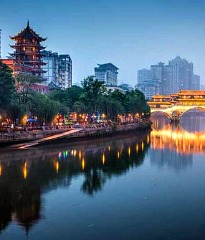 Chengdu
Chengdu
The capital city of Sichuan region, Chengdu has dominated this area for almost 2500 years. A major trading and cultural centre in the past, it holds the status of being one of the ... Read more
Guilin
![Guilin]() Guilin
Guilin
Guilin is located in the north of Guangxi Zhuang Autonomous Region on the west bank of the Li River. It is one of the most popular travel destinations in China for its beautiful la... Read more
Shanghai
![Shanghai]() Shanghai
Shanghai
Shanghai is the largest city in China’s and it is an important economic, financial, international and cultural centre. It is a very modern city by Chinese standards - althoug... Read more
Suzhou
![Suzhou]() Suzhou
Suzhou
Suzhou is mostly known for its refined garden design. Since nearly half of the city’s area is covered by water - including a vast number of ponds, streams and Taihu Lake one ... Read more
Tibet
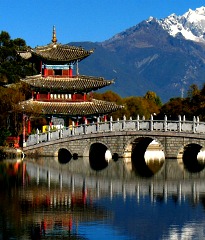 Tibet
Tibet
Situated in the south-western part of China, the Autonomous Region of Tibet is one of the largest provinces in China covering over 460,000 square miles, however due to the harsh cl... Read more
Xian
![Xian]() Xian
Xian
Xian is one of the Four Great Ancient Capitals of China and it has held that position under several of the most important dynasties in Chinese history. Xian is located in the no... Read more
Yangtze
![Yangtze]() Yangtze
Yangtze
The Yangtze River, known as Chang Jiang or Yangzi in China, is the longest river in Asia. Springing from the glaciers of the Qinghai-Tibet Plateau Yangtze makes its way into the Ea... Read more
Beijing is the capital of the most populous country in the world, the People's Republic of China, and it is also the second largest city after Shanghai. Beijing literally means... Read more
 Chengdu
ChengduThe capital city of Sichuan region, Chengdu has dominated this area for almost 2500 years. A major trading and cultural centre in the past, it holds the status of being one of the ... Read more
Guilin is located in the north of Guangxi Zhuang Autonomous Region on the west bank of the Li River. It is one of the most popular travel destinations in China for its beautiful la... Read more
Shanghai is the largest city in China’s and it is an important economic, financial, international and cultural centre. It is a very modern city by Chinese standards - althoug... Read more
Suzhou is mostly known for its refined garden design. Since nearly half of the city’s area is covered by water - including a vast number of ponds, streams and Taihu Lake one ... Read more
 Tibet
TibetSituated in the south-western part of China, the Autonomous Region of Tibet is one of the largest provinces in China covering over 460,000 square miles, however due to the harsh cl... Read more
Xian is one of the Four Great Ancient Capitals of China and it has held that position under several of the most important dynasties in Chinese history. Xian is located in the no... Read more
The Yangtze River, known as Chang Jiang or Yangzi in China, is the longest river in Asia. Springing from the glaciers of the Qinghai-Tibet Plateau Yangtze makes its way into the Ea... Read more
Relevant tours
Visa-free Beijing: Acquaintance in 3 Days (CN-01)
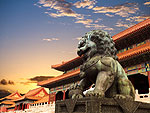 Transiting through China? This is your opportunity to make the most of your holiday by taking a short stopover to explore the Chinese capital en-route to your final destination. No entry visa is required and we will take care of airport transfers, accommodation and will offer a guided programme.
Transiting through China? This is your opportunity to make the most of your holiday by taking a short stopover to explore the Chinese capital en-route to your final destination. No entry visa is required and we will take care of airport transfers, accommodation and will offer a guided programme.
3 days
 Transiting through China? This is your opportunity to make the most of your holiday by taking a short stopover to explore the Chinese capital en-route to your final destination. No entry visa is required and we will take care of airport transfers, accommodation and will offer a guided programme.
Transiting through China? This is your opportunity to make the most of your holiday by taking a short stopover to explore the Chinese capital en-route to your final destination. No entry visa is required and we will take care of airport transfers, accommodation and will offer a guided programme. 3 days
Beijing Explorer - Discover the Chinese Capital in 6 Days (CN-02)
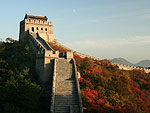 This tour looks at the Chinese capital Beijing in-depth, exploring its varied and fascinating landmarks. There will also be free time to explore the city on your own – perhaps for shopping or to discover its various restaurants and districts - or to add on another city before or after your tour.
This tour looks at the Chinese capital Beijing in-depth, exploring its varied and fascinating landmarks. There will also be free time to explore the city on your own – perhaps for shopping or to discover its various restaurants and districts - or to add on another city before or after your tour.
6 days
 This tour looks at the Chinese capital Beijing in-depth, exploring its varied and fascinating landmarks. There will also be free time to explore the city on your own – perhaps for shopping or to discover its various restaurants and districts - or to add on another city before or after your tour.
This tour looks at the Chinese capital Beijing in-depth, exploring its varied and fascinating landmarks. There will also be free time to explore the city on your own – perhaps for shopping or to discover its various restaurants and districts - or to add on another city before or after your tour. 6 days
Golden Triangle of China: Discover Beijing, Xian, Shanghai - 8 Days (CN-03)
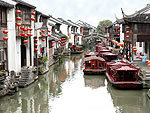 China encapsulated – this tour is a ‘best of’ tour where you will experience the very finest sights in China’s most fascinating cities. A great introductory tour, or perfect for those who are interested in seeing how China’s race towards the future impacts on its past.
China encapsulated – this tour is a ‘best of’ tour where you will experience the very finest sights in China’s most fascinating cities. A great introductory tour, or perfect for those who are interested in seeing how China’s race towards the future impacts on its past.
8 days
 China encapsulated – this tour is a ‘best of’ tour where you will experience the very finest sights in China’s most fascinating cities. A great introductory tour, or perfect for those who are interested in seeing how China’s race towards the future impacts on its past.
China encapsulated – this tour is a ‘best of’ tour where you will experience the very finest sights in China’s most fascinating cities. A great introductory tour, or perfect for those who are interested in seeing how China’s race towards the future impacts on its past. 8 days
Golden Triangle & Gardens of China: Beijing, Xian, Shanghai, Suzhou - 9 Days (CN-04)
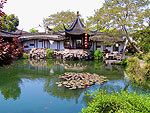 This fantastic tour is a great way to discover the highlights of China and to get under the skin of some of its finest cities. China is huge and its enormous cities offer the traveller a hub on which to focus - excellent museums, galleries & architecture. You will also visit famous gardens of Suzhou.
This fantastic tour is a great way to discover the highlights of China and to get under the skin of some of its finest cities. China is huge and its enormous cities offer the traveller a hub on which to focus - excellent museums, galleries & architecture. You will also visit famous gardens of Suzhou.
9 days
 This fantastic tour is a great way to discover the highlights of China and to get under the skin of some of its finest cities. China is huge and its enormous cities offer the traveller a hub on which to focus - excellent museums, galleries & architecture. You will also visit famous gardens of Suzhou.
This fantastic tour is a great way to discover the highlights of China and to get under the skin of some of its finest cities. China is huge and its enormous cities offer the traveller a hub on which to focus - excellent museums, galleries & architecture. You will also visit famous gardens of Suzhou. 9 days
Best of China: Beijing, Xian, Guillin & Li River, Shanghai, Suzhou - 11 Days (CN-05)
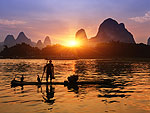 China’s cities dominate the eastern coast and are what most people think of when they think of China. But the country also excels in natural beauty. After the excitement and buzz of China’s mega-cities it is refreshing to see another, quieter side. This tour has all this, the best cities, a cruise on the majestic Li River & a visit to the garden city of Suzhou.
China’s cities dominate the eastern coast and are what most people think of when they think of China. But the country also excels in natural beauty. After the excitement and buzz of China’s mega-cities it is refreshing to see another, quieter side. This tour has all this, the best cities, a cruise on the majestic Li River & a visit to the garden city of Suzhou.
11 days
 China’s cities dominate the eastern coast and are what most people think of when they think of China. But the country also excels in natural beauty. After the excitement and buzz of China’s mega-cities it is refreshing to see another, quieter side. This tour has all this, the best cities, a cruise on the majestic Li River & a visit to the garden city of Suzhou.
China’s cities dominate the eastern coast and are what most people think of when they think of China. But the country also excels in natural beauty. After the excitement and buzz of China’s mega-cities it is refreshing to see another, quieter side. This tour has all this, the best cities, a cruise on the majestic Li River & a visit to the garden city of Suzhou. 11 days
Great China Discovery with Majestic Yangtze River Cruise - 12 Days (CN-06)
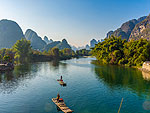 China's mega cities are just one side of this great land. The Yangtze River is also a highlight. One of the world’s largest waterways, it flows through China’s varied scenery from its source in Qinghai Province slicing the country neatly into north and south. This tour is a fun-filled and enlightening way to see many of China's highlights.
China's mega cities are just one side of this great land. The Yangtze River is also a highlight. One of the world’s largest waterways, it flows through China’s varied scenery from its source in Qinghai Province slicing the country neatly into north and south. This tour is a fun-filled and enlightening way to see many of China's highlights.
12 days
 China's mega cities are just one side of this great land. The Yangtze River is also a highlight. One of the world’s largest waterways, it flows through China’s varied scenery from its source in Qinghai Province slicing the country neatly into north and south. This tour is a fun-filled and enlightening way to see many of China's highlights.
China's mega cities are just one side of this great land. The Yangtze River is also a highlight. One of the world’s largest waterways, it flows through China’s varied scenery from its source in Qinghai Province slicing the country neatly into north and south. This tour is a fun-filled and enlightening way to see many of China's highlights. 12 days